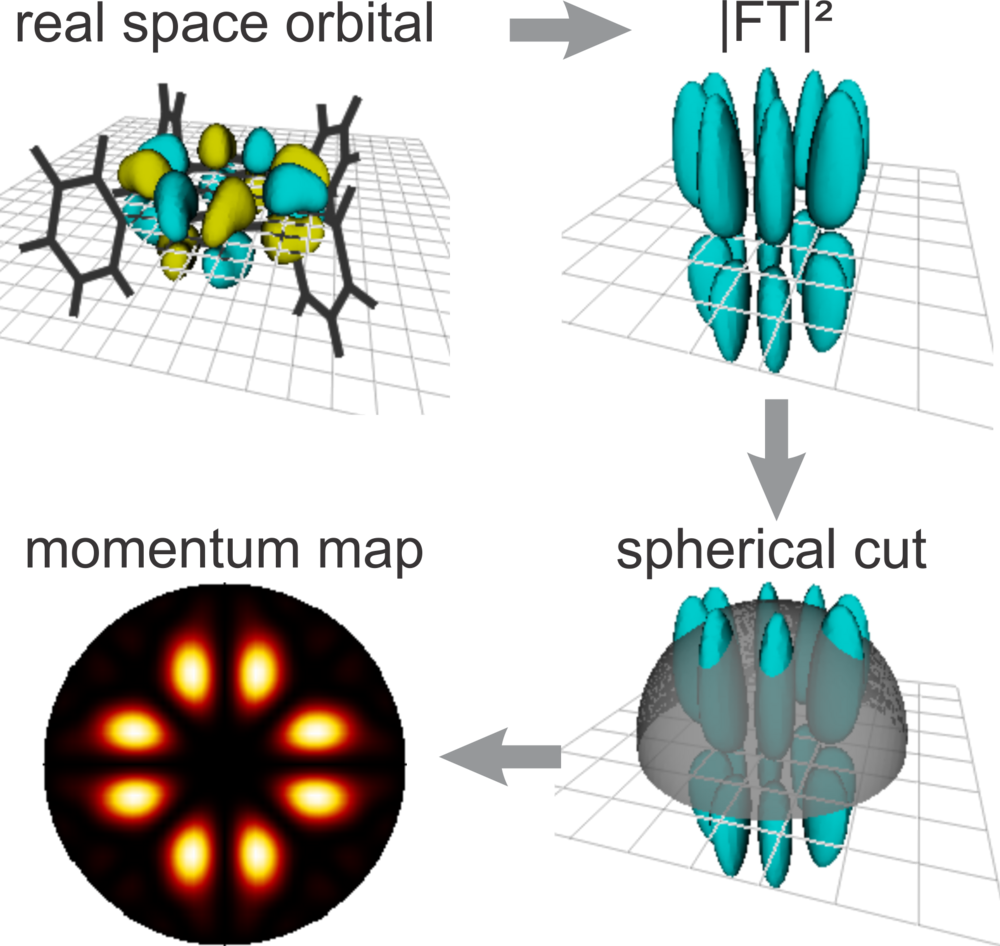Photoemission Orbital Tomography
Accessing the momentum fingerprint of molecular orbitals
POT is a combined experimental and theoretical approach applied to organic/metal interfaces, where the photoelectron angular distribution (PAD) are interpreted in terms of the molecular orbital structure of the initial state. Currently, this is achieved by approximating the final state of the photoemission process with a plane wave, which makes the PAD intensity, I(kx, ky), proportional to the Fourier transform of the initial state orbital [1]. Importantly, this relation establishes a direct correspondence between the angular distribution of the photocurrent and the molecular orbitals in reciprocal space. Thus, molecular orbitals can be identified based on their momentum pattern [2-3], or their wave functions can be retrieved using iterative computational procedures [4]. A schematic representation of POT is depicted here.
POT has proven to be a valuable tool for investigating organic mono- and bilayer systems on surfaces, providing access to both electronic structure and molecular adsorption geometry [5]. Furthermore, this technique can detect geometric distortions of aromatic complexes with extremely high accuracy [43], and has been successfully employed to study reaction intermediates and/or products of on-surface thermally induced chemical reactions. POT can also be performed in a pump-probe scheme, enabling tomographic experiments of unoccupied molecular orbitals at the femtosecond scale [6].
[1] P. Puschnig et al. Science 326, 702 (2009).
[2] X. Yang, et al. J. Phys. Chem. Lett. 10, 6438 (2019).
[3] G. Zamborlini et al. Nat. Commun. 8, 335 (2017).
[4] D. Lüftner et al. Proc. Natl. Acad. Sci. 111, 605 (2014).
[5] P. Hurdax et al. ACS Nano 16, 17435 (2022).
[6] R. Wallauer et al. Science 371, 1056 (2021).
